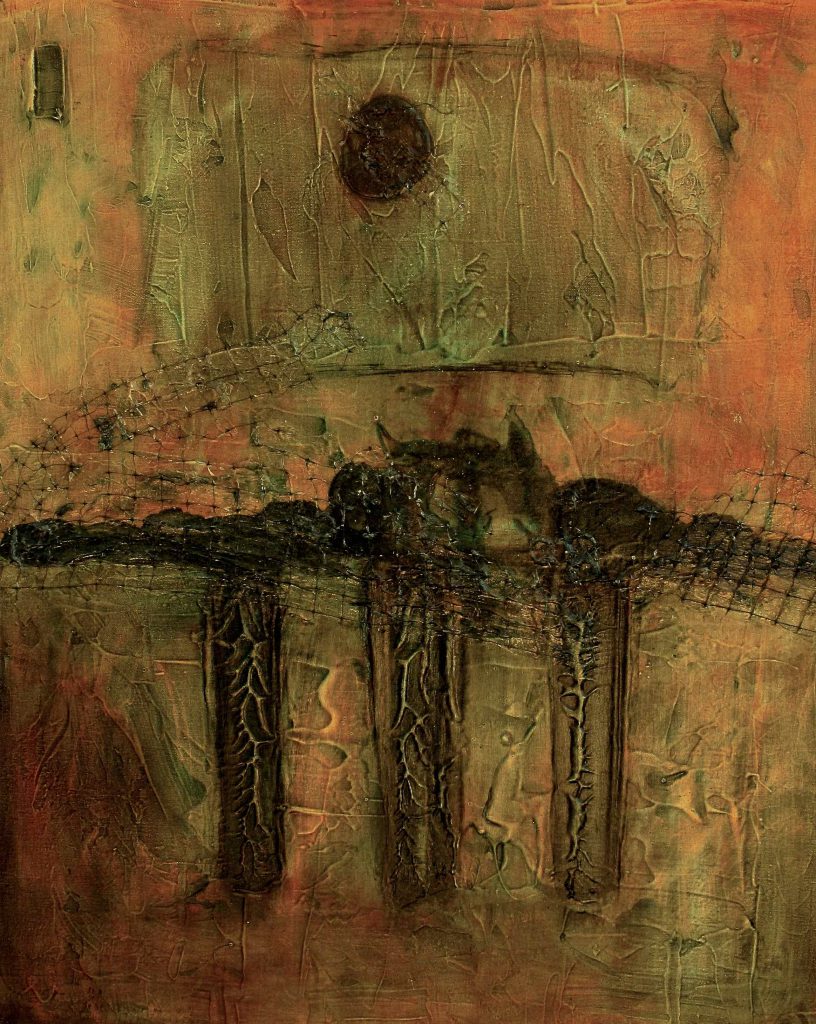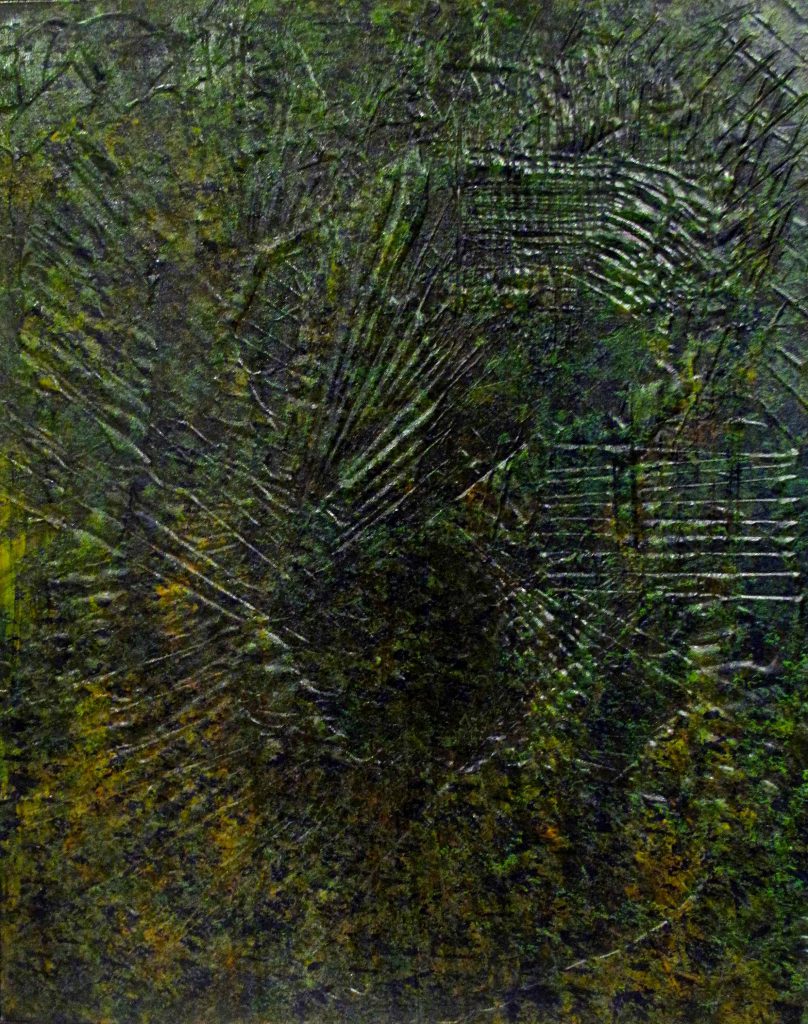FRAGMENTS: An Archeology of Memory
Inland Empire Museum of Art, 2017
From the Introduction:
It’s been fifty years since I returned from Vietnam and it has never been easy to speak about the experience. I served for six months in and out of the war zone as a deck hand on a destroyer providing artillery support for marine ground action in and around the DMZ, interdiction of coastal vessels, bombardment of enemy positions above the DMZ and participation on Operations Thayer, Market Time and Sea Dragon; enough that our destroyer squadron DESRON 9 earned the only commendation given to destroyers for sustained combat since WWII. Some 7 of the 12 ships in the squadron were hit by shore artillery and missiles. I say this without pride or authorship as I can’t remember much of it. Mostly fragments and disconnected scenes.
Selective amnesia and various dissociative phenomena had followed me home. I did write several poems about returning but I look upon my memories of the time as some kind of anthropological evidence to which I can only half relate. Recalling disconnected fragments is different than constructing narrative, however. This year—a half century following my return in 1967—I am determined to look at the memory fragments more closely and make more sense of the experience. These paintings show my attempts at placing those fragments in a fuller and more meaningful perspective. It’s an experiment that continues.
I exhibited the writings and paintings at the Inland Empire Museum of Art in 2017. This book is the exhibit catalogue, published by IEMA and is available through their kind auspices.
From the Commentary:
Johnson’s Fragments exhibition offers something quite different, a choreographed, dance-like interplay of words and images that is both dynamic and remarkably subtle. To learn of the violent realities that underlie these images, some harsh, some remarkably gentle and restrained, is to witness the delicate excavation of memories long buried, and, perhaps most important, how the recovery process can look and feel, how it happens in the process of painting and writing.
Marjorie Harth Hines
Emerita Professor and Director,
Pomona College Museum of Art
These are stories with no plot, seared into memory so deeply they
can never be put into perspective. They stand as absurd flash photos, lined in an album of such images, named perhaps, sometimes described, but never connected. They are unlikely to find their way into the warp and woof of causation, relationship, time, or value. The bearer of these images is con- signed to carry them forever in a small book apart from lived history.
In the midst of it all he was surprised by a curiously detached commentary rolling around in his head; something about the frustration of needing desperately to hear and see in darkness when your vision is blinded by muzzle flash and you are deafened by explosion. Acutely aware of how clearly defined a target he made he nevertheless strained to discern movement beyond the afterimages which remained.
Asshole Bill. He left the ship before we steamed north. He was off before we fired all night for those two weeks in April. Before the Iron Triangle. Cold C-rats for two weeks seasoned lightly with aluminum oxide paint chips and asbestos dust jarred loosed from the overhead loosened by the mind-numbing concussion every night. Beans and motherfuckers and everything looked and tasted the same in the dim red lights, smelling of oil and cordite. Trying not to scream from claustrophobia in the pulsing darkness. We brought evil with us and we congealed it while we were there.
“For me: How do you pay back the world for the life of the medic you should have been? How do you pay back those guys for the parts of their bodies and souls that were blown away? You don’t. But you try. You have to make every minute count, do impossible things, keep silent. You can’t enjoy, you can’t love, can’t allow yourself the passions those who died can not experience. You build a bunker and hunker down inside and try to figure out how you are going to make the chaos quit. You devote yourself to living a life beyond reproach. You take care of your babies and do every thing imaginable to keep them from being blown up. You take care to protect those who have the bad sense to love you from the rage that threatens to overrun your position every day and every night. You don’t feel. You don’t feel because it is how you get hurt and how you hurt others. You dream of tidal waves at night.”
Rolling off the bunk he would dive for his boots. Had to have boots on. Can’t find them. Other sailors dropping down from upper bunks onto him. Something would hit his head hard and he would go down, then up again to fight for his boots. Bodies would tangle and the big guns would fire. It was too late! His first job was to run out the after-passage exit, around the gun as it swung into position, and secure the aft hatch before the seas rolled over the stern and the guns fired. Get swept into the sea or lose your hearing from concussion.
Then the screaming would begin. Fighting for his boots, becoming further entangled in his wife’s clothing pulled down around him as he lay in the closet next to their bed, head ringing from pitching into the back of the closet and from the screams of his terrified wife.
Flew home on a medivac flight. The big transport was lined with stretchers stacked three high on both bulkheads and across the tail. Most were marines who’d lost both legs and sometimes more. Each had sheets ending just below their waist with drip lines running in and drip lines running out. For eighteen hours I watched at the frantic efforts of flight nurses trying to keep them alive and failing on at least five occasions.






